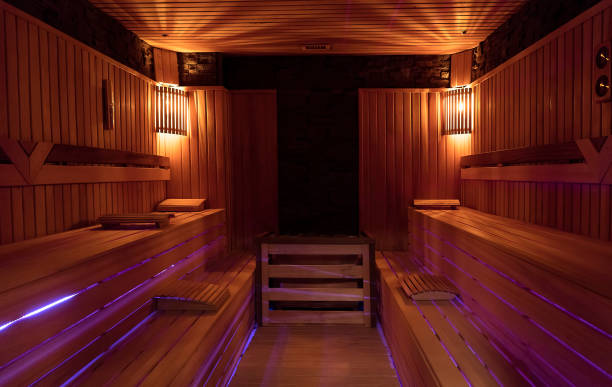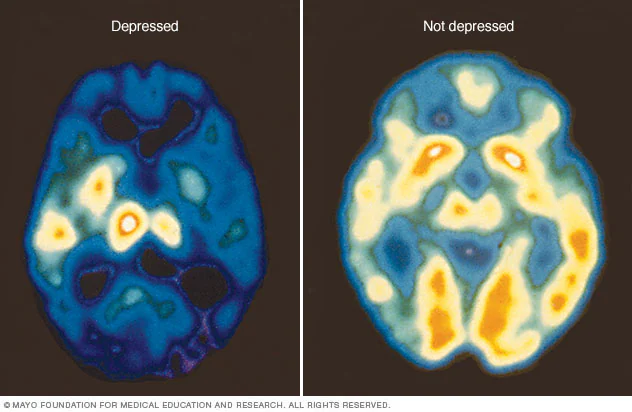
What makes a wellness therapy effective? Why is it worthy of you practicing it? Lots and lots of research. The research cannot support a bias or be a shallow theory it must undergo trials, case studies and scientific research. You may be familiar with the cold plunge trend and the rise of sauna use as ways to maximize health, boost immunity and burn the metabolism.
A new study from the University of California San Francisco (20,000 participants in 106 countries) found that people with depression have higher body temperatures. The researchers believe these findings indicate the potential for depression treatments focused on lowering body temperature—and ironically, how temporarily heating people up (hot yoga, saunas, infrared saunas, hot water treatments), could lead to rebound body temperature lowering that lasts longer than simply cooling people down, as through an ice bath. UCSF is now studying heat therapies, in particular sauna treatments, as a body-based intervention for clinical depression symptoms.

The Rise in Depression
Depression has become a health crisis of epidemic proportions. Globally, the prevalence of major depressive disorder (MDD) has risen over the last several generations in countries across the world. The last decade has seen a particularly significant increase in depression in the United States, with prevalence rates increasing by 33% between 2013 and 2016, with the largest increase among youth and young adults. This is particularly concerning as the disease course is most likely to be malignant, and the costs of depression in terms of lost opportunities across a lifetime are likely to be highest in youth and young adulthood. Rates of antidepressant use have increased substantially in most Western countries during the same time period, and currently available pharmacologic agents have significant limitations in efficacy. Taken together, these patterns highlight the urgent need to identify and implement new treatments for depression.
Although depression is both biologically and behaviorally heterogeneous, an important first step in treatment development is often to identify physiologic signatures among individuals with MDD that are not present among those without MDD. Although no single biological or behavioral abnormality will characterize all individuals with MDD, the identification of an abnormality associated with MDD may open the door to identifying a relatively biologically homogeneous subgroup that demonstrates a larger treatment response to interventions that target the specific abnormality.
How The Study Was Conducted
This study was assessed using body temperature and having participants use wearable sensors. In these analyses, higher levels of depressive symptoms were associated with higher body temperatures during time awake. Researchers observed this finding using body temperatures assessed at most once per day via self-collection using handheld thermometers, and at most once per minute via an unobtrusive wearable sensor device (worn on the finger). This finding confirmed a collection of smaller studies done earlier with a group of only 300 (as compared to this study of 20,000).

What We Know
We know that depression episodes changes the body temperature including the fluctuation of temp in the brain. Those experiencing depression can often have a change in skin temperature and sympathetic skin response. Other manifestations can occur during depression like headaches, tiredness, body aches and a feeling of apathy. The body often physically slows down.

Heat with Heat
It may seem counterintuitive that using interventions that brief raise body temp could prevent a condition that’s characterized by an increase in body temperature. In the context of this study for MDD whole body hyperthermia (such as the use of a sauna) produce longer-term and sustained reductions in body temperature.
Whether in saunas, sweat lodges, or baths, heat has been used since time immemorial for emotional and physical healing. In regards to mental health, sauna use associates with a reduced risk of new-onset psychosis, hot baths improve symptoms in autistic individuals, and hyperthermic baths and whole-body hyperthermia (WBH) have been repeatedly reported to improve symptoms of major depressive disorder (MDD).
These findings are consistent with other studies demonstrating that physical warmth promotes feelings of social connection and safety from threat, both of which are protective factors against the development of MDD.
Recommendation for Heat Therapies
For Sauna Therapy I recommend the assistance of someone to either monitor your session or to control temperatures based on the sauna type that is used.
Spending merely 15 minutes inside a sauna can lower your stress hormone levels. For that goal, a traditional sauna at 95 degrees Celsius can be used (203 Fahrenheit).
However, the case can be made that infrared saunas offer a far superior result for lowering stress. Several reasons can be given for that conclusion:
- Far infrared saunas are far gentler than regular saunas at they have a maximum temperature of 55 degrees Celsius (131 Fahrenheit). The sauna won’t feel extremely hot and the air will be relaxing for your airways instead of burning them.
- The different types of infrared light penetrate your body. That light thereby affects cellular function through many different mechanisms. In plain English, different types of far and near infrared act like a type of nutrient in your cells.
- To many people, spending time in an infrared sauna feels exceptionally relaxing.
Depending on the study you refer to, infrared saunas activate the ¨rest and digest¨ part of the nervous system (17; 18; 19). That ¨rest and digest¨ part is called the ¨parasympathetic nervous system¨.
That parasympathetic nervous system can be opposed to the sympathetic nervous system. The sympathetic nervous system is often called the ¨fight, flight, or freeze¨ nervous system – and active during stress.
And, while in the short-term, the sympathetic nervous system is activated during a sauna session, after the session is over, the parasympathetic becomes more predominant than before. Researchers can measure the increased activation of the parasympathetic nervous system by the ¨Heart Rate Variability¨(HRV=. That HRV is how much the interval between your heartbeats differs between beats – a higher HRV signifies deeper relaxation in the nervous system.
Overall breathing capacity (FEV1) also increases over time with sauna sessions. Higher FEV1 is also a sign of greater parasympathetic activation. Overall, these results are extremely promising for stress reduction in society.
For the best stress-reduction results, you’ll have to use a sauna at least thrice weekly for six weeks. The duration of the sessions was 30 minutes in total (with breaks).

Depression Signs to Look For
Although depression doesn’t look the same for everyone watch for subtle to extreme signs:
Overwhelming feelings of helplessness and hopelessness
Isolation
Lack of interest in a few things or nothing at all
Cocooning yourself
Wearing darker clothing, shades and hoodies (seemingly wanting to disappear or be unseen)
Living on autopilot (doing the day to day things without being connected to it)
Fantasizing about leaving earth (suicidal ideation)
Moodiness
Food for Thought
I believe this study supports the suggestion often given by therapists and practitioners to step outside and get some sun. Seasonal depression for those living in colder months arise often and the need to find warmth and heat is necessary.
There is great benefit for our mitochondria when it is exposed to the sun. No, don’t put yourself in danger of extreme heat exposure but I do strongly encourage sun, heat and warmth. (Sidenote: the use of sunscreen is important year round not just in spring/summer)
Final Thoughts
Take some time and sit with this discovery. Determine how you can add more heat into your life. If you’ve not been in favor of heat this could be a new opportunity to develop a sustainable route that works for you. You may be surprised in what you experience.
As we continue to live and learn how to manage stress, know the good stress from the bad stress and handle it healthily build a community around you that you can voice your concerns to without shame. Even if shame wants to consume you do it anyway.
Here’s to your well-being.
Be Well Be Whole.
Images: Mayo Foundation and iStock
Research credit: citing




0 Comments